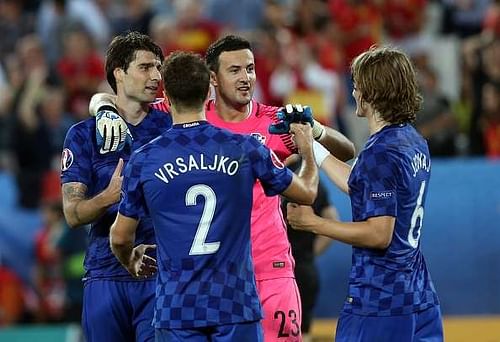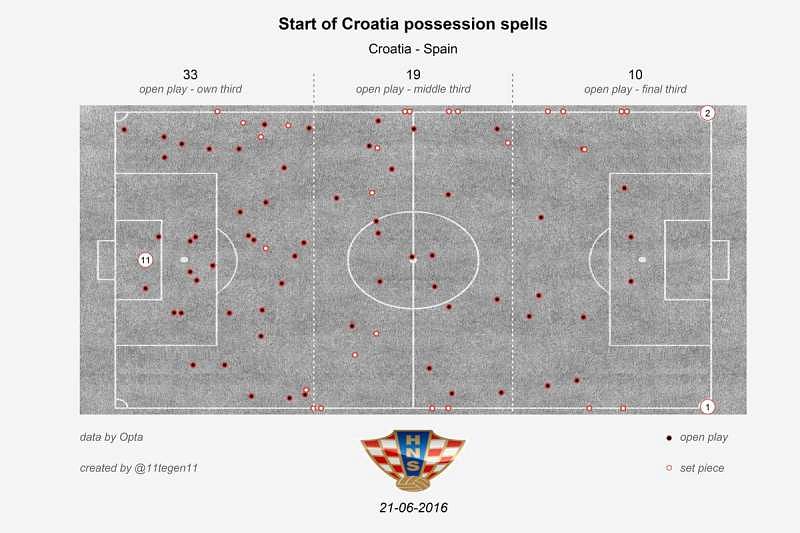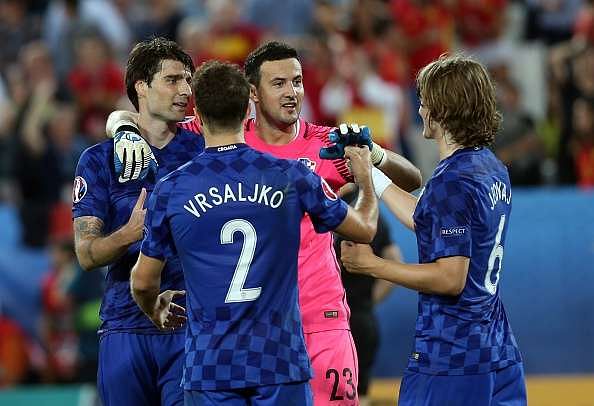
Euro 2016: Croatia 2-1 Spain - Tactical analysis
One of the most eagerly anticipated game of the group stage lived up to its billing as Croatia and Spain served an exciting encounter devoid of the negativity and defensive mindset which has plagued the Euros so far because of the new format. Spain only needed a draw to progress as group stages while Croatia playing without their talisman Luka Modric knew that anything but a win would pit them against Italy and in the tougher half of the draw.
Croatia coach Ante Cacic was without Luka Modric and Mario Mandzukic due to injuries and made five changes introducing 20 year-old Marko Rog in midfield to partner Milan Badelj and 21 year-old Marko Pjaca on the flank, the pair coming from Dinamo Zagreb. 21 year-old Tin Jedvaj partnered Vedran Corluka in central defence and Nikola Kalinic played up top with Šime Vrsaljko deployed at right back.
Pre-match rumours of crowd unrest proved untrue and it was largely uneventful off the field unlike the throwing of flares on to the pitch which marred their draw with Czech Republic by the ultras to protest against the corrupt Croatia FA.
Spain who hadn’t lost in Euros in their last 14 matches and hadn’t conceded a goal in 690 minutes started with the same line-up as their last two games.
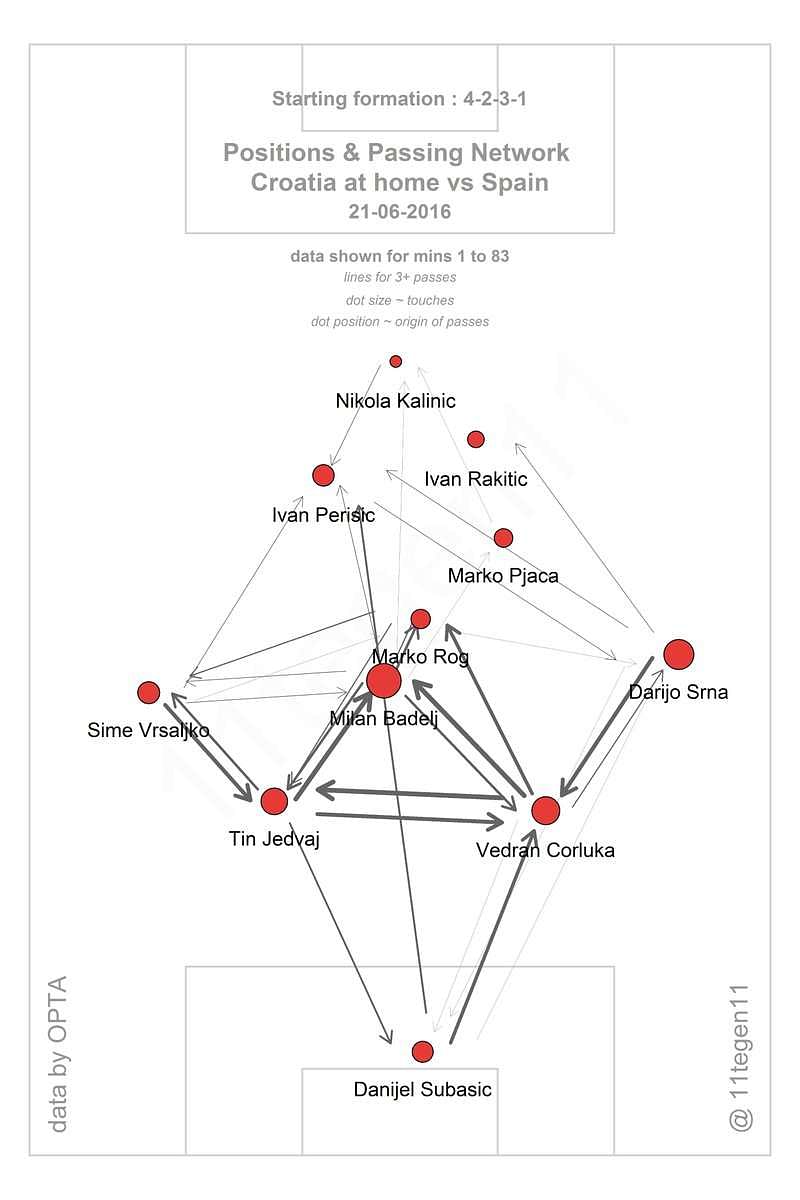
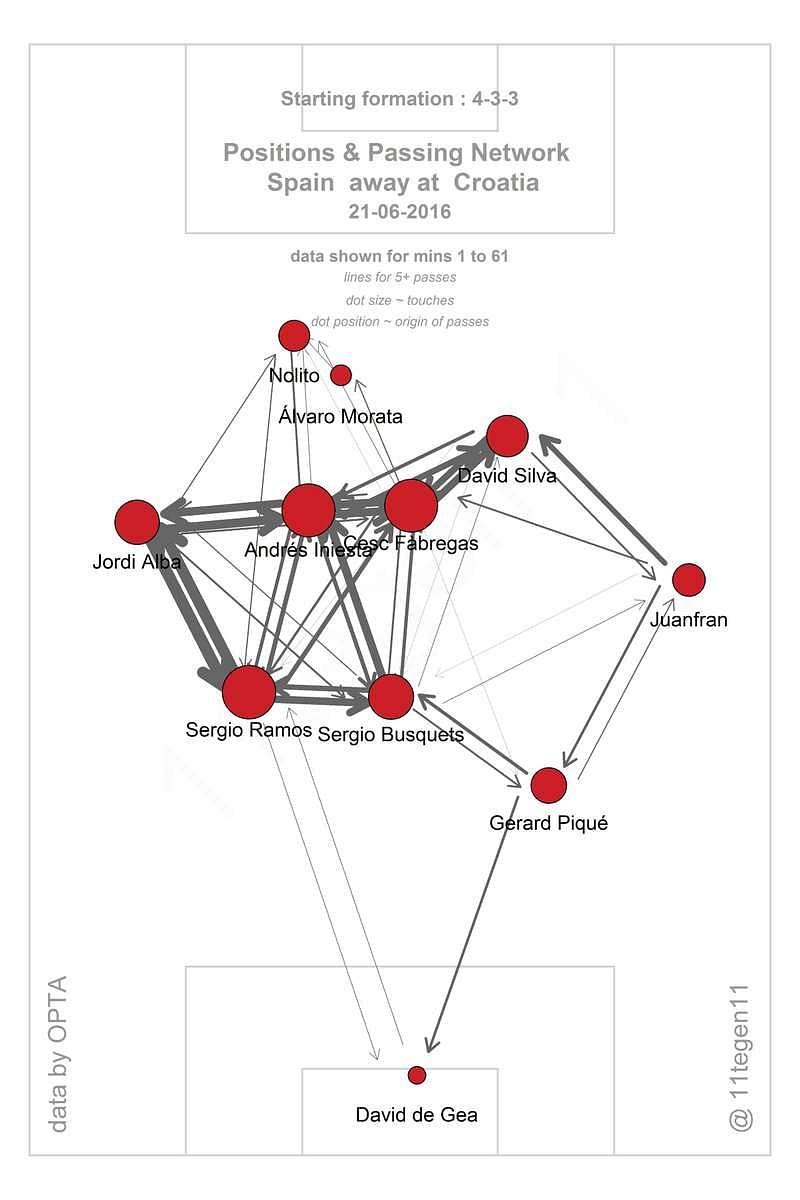
Croatia Take the Game to Spain
Spain would have been taken aback by Croatia’s high-pressing approach as they looked to prevent short goal-kicks. Pique and Ramos along with De Gea were given no time on the ball and Kalinic leading with Rakitic looked to smother build-up play from the back.
It was that cavalier approach which proved to be counterproductive, at least early on as Spain played around the press from a goal kick and Busquets was able to find Fabregas in acres of space behind Croatia’s midfield which was too far behind the front two for the pressing to be effective.
His through ball to Morata was intercepted by Jedvaj but a sliding Vrsaljko had committed himself too with a slide and the ball fell to Silva. The Manchester City playmaker found Fabregas with a delicious reverse pass who then dinked it over Subasic for Morata to tap in.
Croatia’s didn’t change however and their pressing induced mistakes in first Ramos and then De Gea a few minutes later which led to Ivan Rakitic hitting the bar, the post and seeing the ball bounce on the goal line. It was a lucky reprieve for the goalkeeper but showed a sign of things to come.
Along with their pressing, Croatia remained a well-organised unit falling back into a 4-4-1-1 and even a 6-3-1 when further back, as well as moving forward as a unit. They started coming back into the game and were especially dangerous on the break relying on the pace of Pjaca and Perisic to carry the ball 40-50 yards from within their own half.
Spain were restricted to attempts from range without really troubling Subasic who only had a long range Silva effort from range straight at him to deal with. They could have doubled the lead when two vertical passes from Busquets and Fabregas broke their lines but Morata couldn’t control otherwise, he would have been through on goal.
Croatia went on to the other end and Perisic’s right-foot cross from the left wing having beaten Juanfran was coolly dispatched by Kalinic for what was only the 4th back heel goal in Euro history (Milosevic in 2000, Ibrahimovic in 2004 and Welbeck in 2012).
